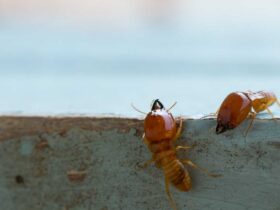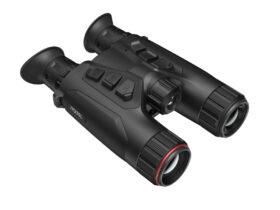Many individuals in Centennial want to use fewer chemicals and pesticides, which can affect non-target animals, in an effort to reduce the environmental impact of pest control. People are also considering alternative approaches to pest management in view of the problem of pesticide resistance. Technology has enhanced many aspects of our life, especially pest control. While some devices that use light to draw in insects are well-established, fewer standard technologies have a lower level of efficacy. Contact a Centennial pest control company.
Are radio frequency devices effective in preventing infestations?
It has been shown that using radiofrequency heating technology, a type of thermal treatment, is a successful method to heat food products rapidly and evenly. This makes it far more suitable than conventional thermal methods, which call for slow, prolonged heating to maintain flavor and texture control over your product.
Treating food items with radiofrequency disinfestation is a successful way of getting rid of fungi, mold, and insects. These treatments are chemical-free, organic, and free of ionizing radiation. They may be added to current production lines and significantly improve shelf life because the technique can reach a nearly five-log kill step (depending on the product). For commodities that can not be treated with traditional fumigation methods, radiofrequency treatment provides a second option to fumigation.
What is the procedure for Radio Frequency Disinfestation?
By quickly vibrating and reorienting water molecules, RF heating produces heat and kills any possible germs or pests. Despite having been in industrial usage for decades, this technology has already become accepted as a standard procedure.
The positive effects of using radiofrequency infestation
A non-invasive, food-safe pest management technique called radio frequency (RF) disinfestation uses high-frequency electromagnetic energy to destroy insects and their eggs.
Due to the non-contact nature of this treatment, it is an effective technique for sterilizing dried fruits, grains, beans, and seeds that are stored in materials like boxes and bags.
What are the safety concerns related to these devices?
There are also safety concerns raised by some users of these devices, who claim that the sound can mute hearing aids, mess with alarm systems, and negatively affect the clarity of phone conversations. Aside from the potential ethical problems with house pets or other pests you might not be trying to control; the noise might unintentionally upset rodent pets like hamsters and guinea pigs. Dogs and cats are able to hear in the ultrasonic range, yet they seem to have no problem with the noise that these gadgets make.
What disadvantages come with using these smart devices?
These devices’ efficacy can be questioned; one of them was the subject of a multimillion-dollar lawsuit after it was discovered that mice could curl up comfortably beneath and sometimes even on top of it! Another drawback to taking into consideration is that, in many cases, this will simply be a band-aid solution. At the same time, specific pests may be deterred, but they will not be properly managed in the same manner that traditional pest control methods will allow.
If you are going to use such devices, what should you know?
If you are eager to have one of these gadgets, you should be conscious of the following:
-
Keep Realistic Expectations
Even studies that show the effectiveness of these ultrasonic insect-repellent devices only show an acceptable percentage of pest reduction. Rather than entirely getting rid of annoying rodents and insects.
-
Expect Returns
It may take some time for benefits to become visible because pests like rodents become accustomed to the sounds produced by ultrasonic equipment.
-
Location of the Device
Because the ultrasonic pest control devices’ soundwaves are weak and have a short range, objects like furniture and walls can easily block them. Place a light close to your device, turn out all other lights, and observe the light’s beams and shadows to figure out the gadget’s location and range. Effectively, the repelling sound waves will only work in regions that get light.
Before trying to handle the matter yourself, it is essential to talk about the options for pest control with your local Pest Services team.











